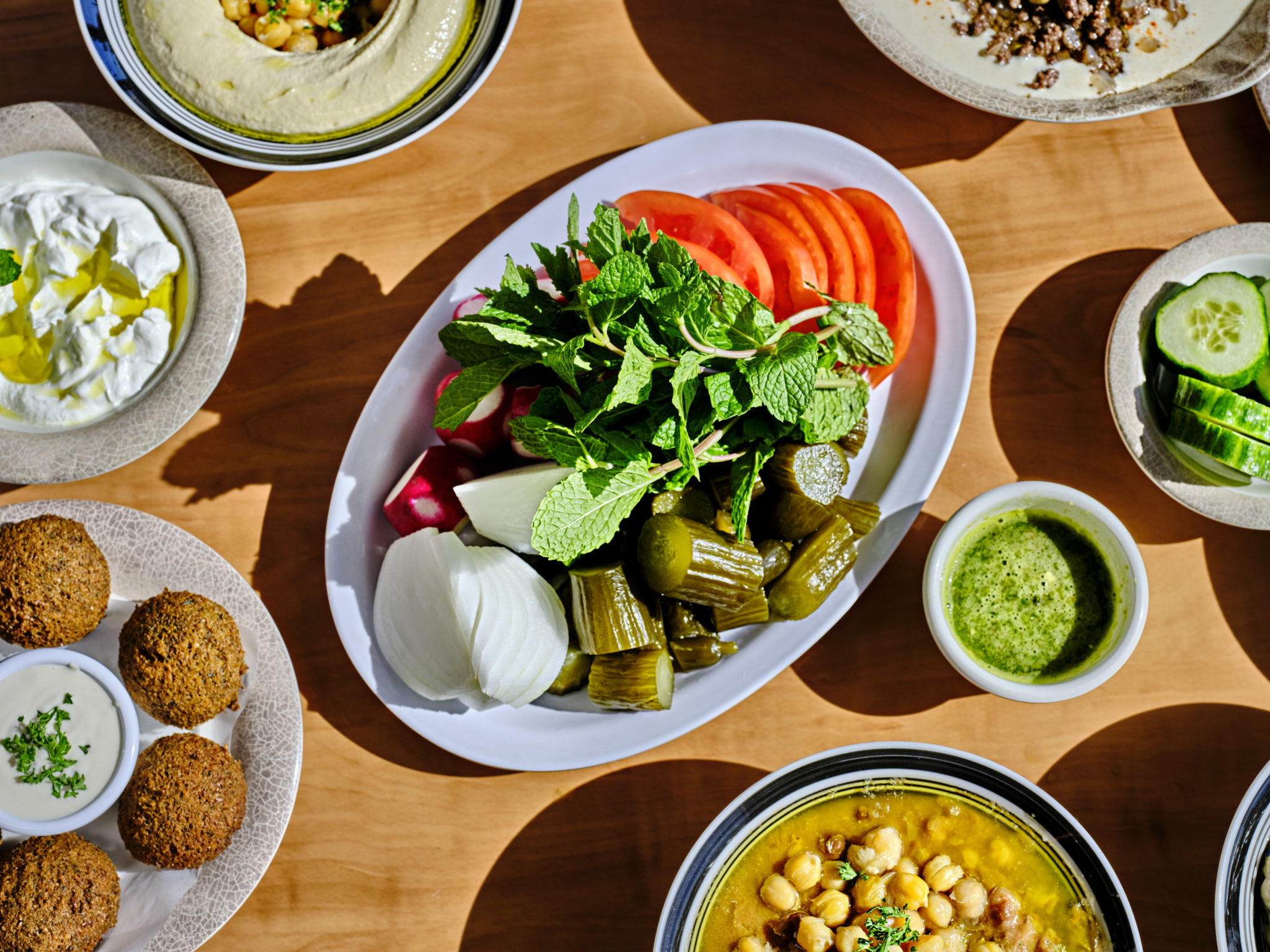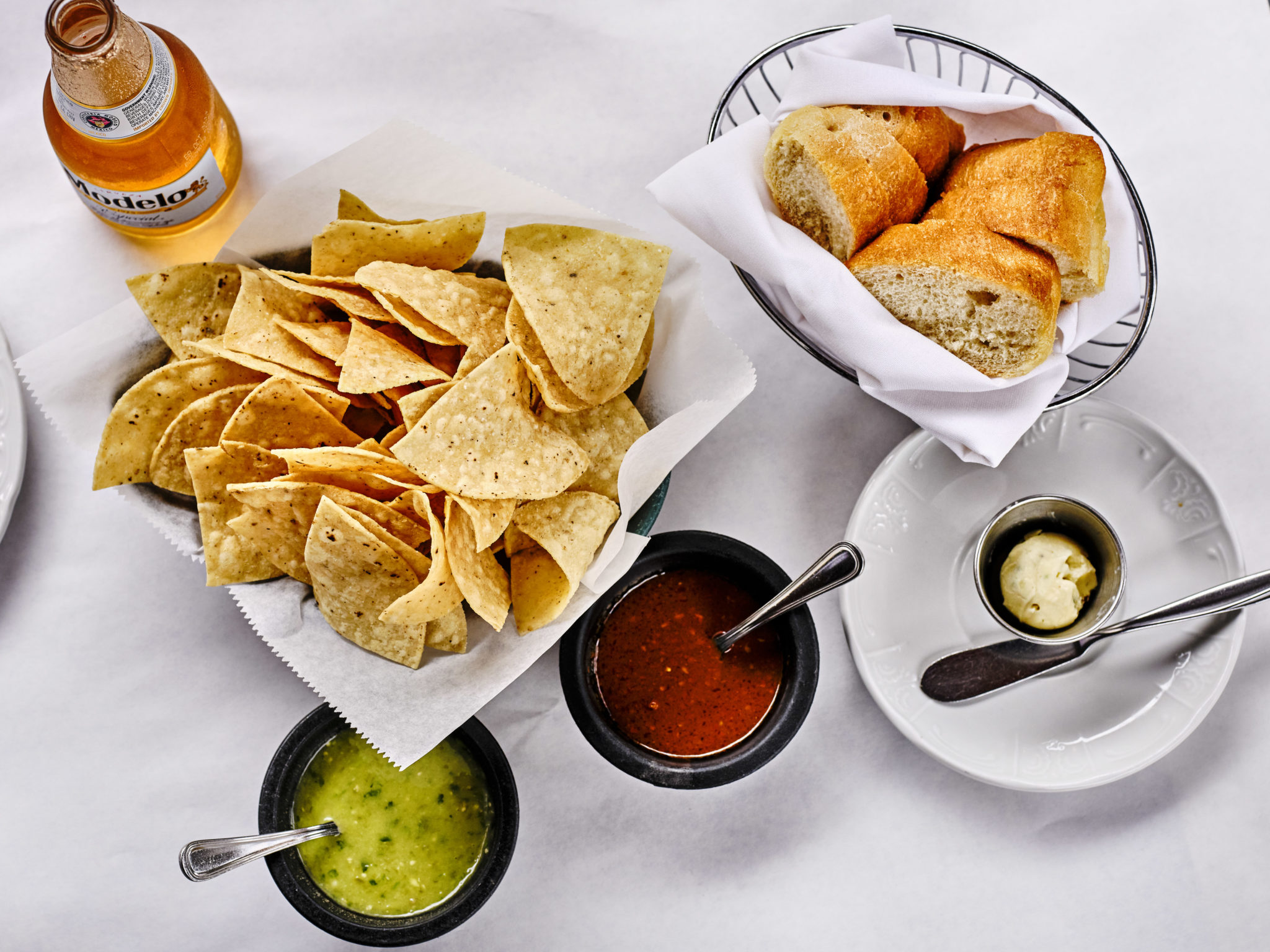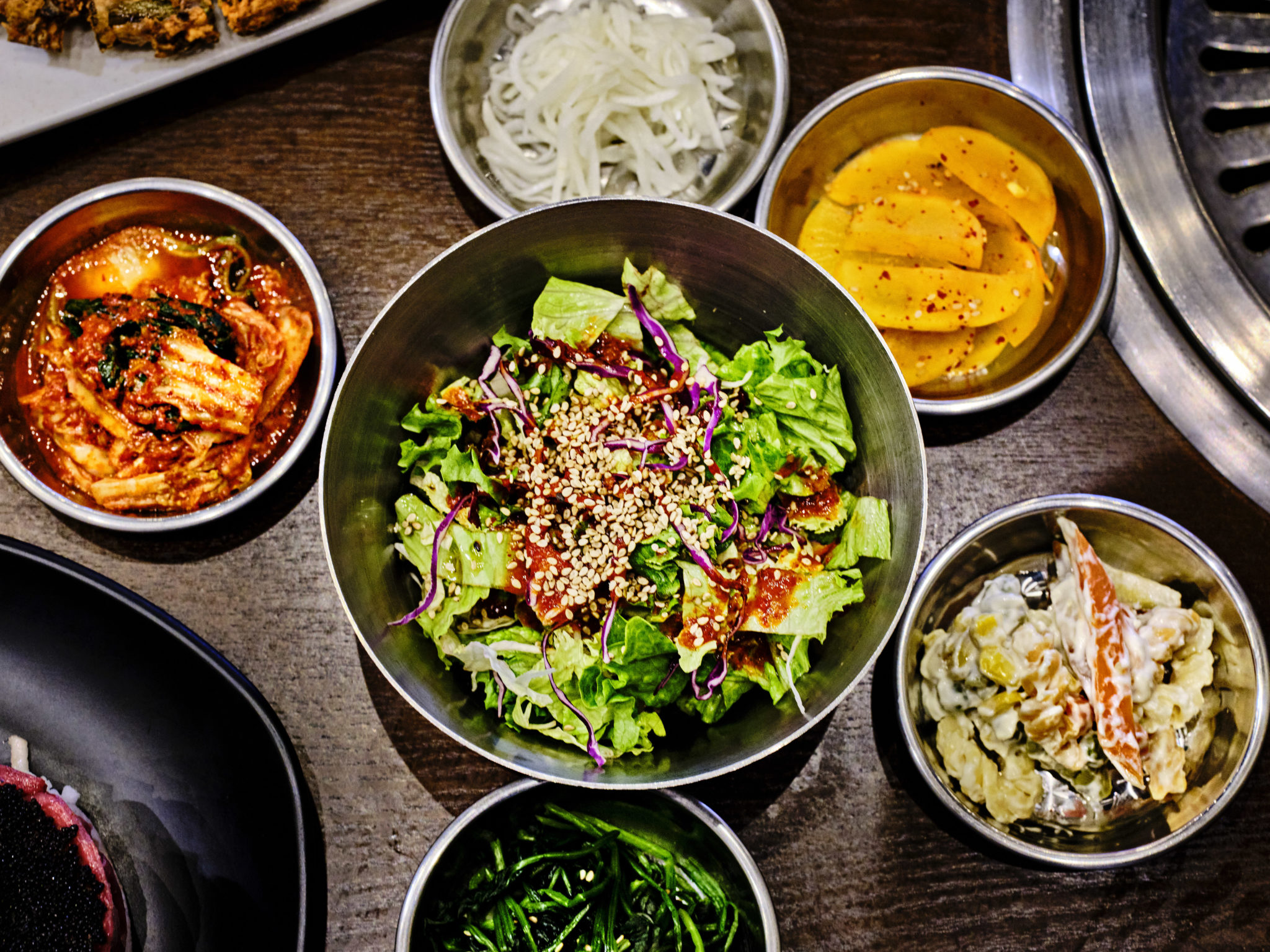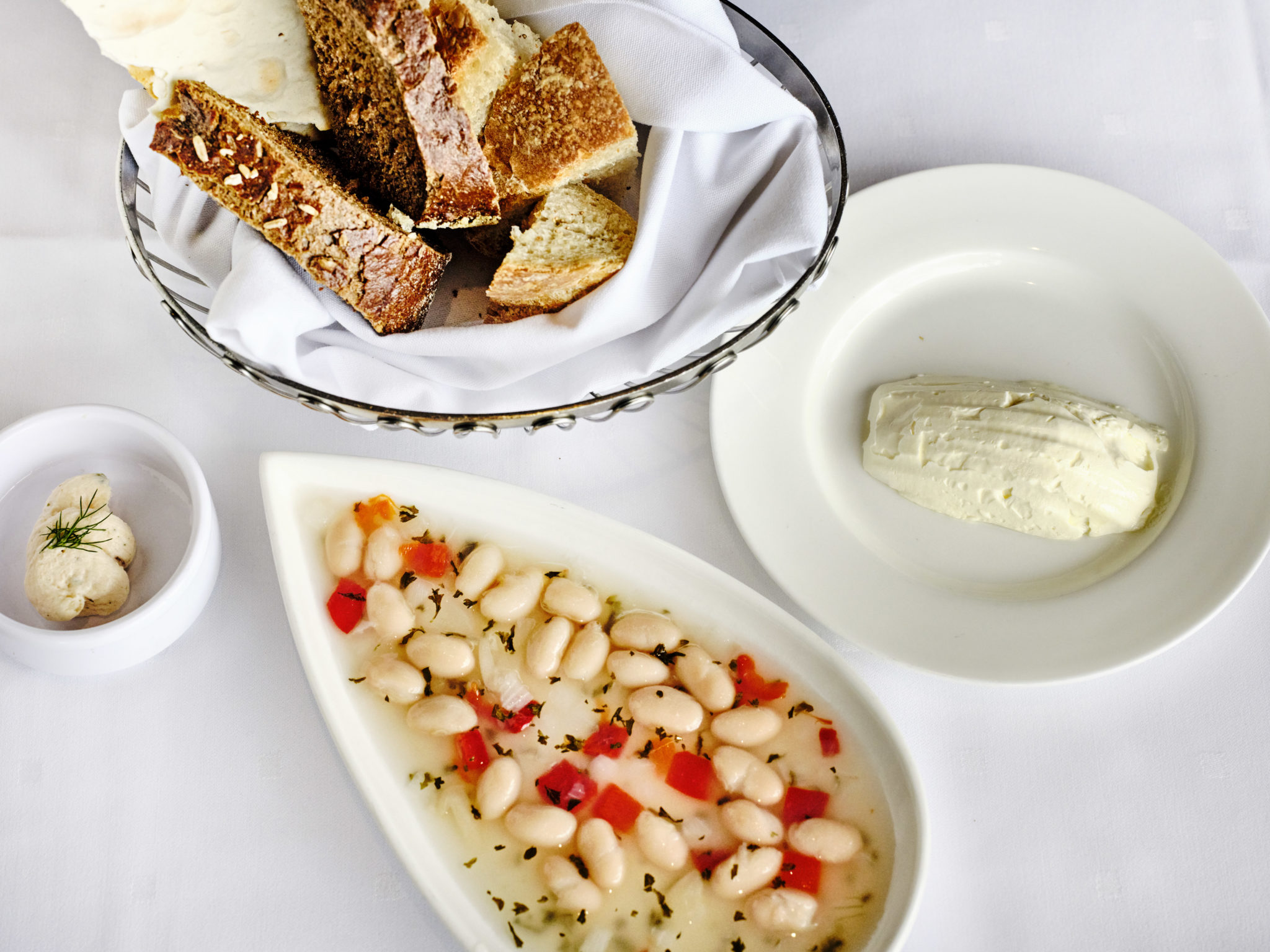Bread, salsa & banchan: Welcome dishes from Detroit-area restaurants
How four local restaurants say “hello” with free food

Photos by Joe Vaughn.
The moment you sit down at AlTayeb Restaurant in Dearborn, you’re greeted with a heaping plate of vegetables. Don’t freak out. This just means that you’re in the right place. Welcome. Have a cup of tea, while you’re at it. The welcome plate will include briny Lebanese pickles, raw white onion, whole radishes, sliced tomatoes, and a pile of fresh mint. It’s meant to be an introductory complement to the mezze that will stream from the kitchen in overwhelming succession if you ordered correctly. But it doesn’t matter what you order, the veggie plate comes free, and every guest receives one. My advice? Fill a pita with a few spicy cubed potatoes of batata harra (you ordered the batata harra, right?), add pickles and mint and maybe a little tahini and enjoy a flavor explosion straight from the streets of Beirut.

You can’t call El Barzon fusion. Chef-owner Norberto Garita’s longstanding ode to his Pueblan heritage and Italian kitchen experience never merges the two worlds on the plate, instead dedicating half of its menu to dishes like mole poblano and enchiladas and the other half to strozapretti and veal scallopini. It always messed me up when I’d go in set on ordering from the Italian side, only for the servers to bring out gratis chips and salsa. (The moment your taste buds go to tortilla chips and chipotle, it’s a little tough to convince your brain it still wants the linguini alle vongole.) Alas, you can have it both ways in the welcome, too. Just let your server know what side of the menu you plan to order from and they’ll swap the chips and salsa for bread and butter if need be. And if you can’t decide, that’s fine, too. Just like Garita himself, you can have it both ways.

If you’ve eaten at a Korean restaurant, you’ve had banchan. You usually have no say in what you’ll get, but you can expect a few small dishes of kimchi and fermented goodies, maybe something braised or blanched or stir-fried, and other variations of vegetables. Every restaurant seemingly has their own banchan set and most change it often. Though banchan often comes out before your entree, its English translation is something closer to “side dish,” and the little snacks are meant to be eaten throughout the course of the meal to complement what are often heavier main dishes, or as a palate cleanser in between bites. And remember: Banchan is meant for sharing. Don’t be a hog.

It’s a delicate thing, reviving an institution. You’ve got to get the details right. And with the revival of Detroit’s legendary Joe Muer Seafood by the Joe Vicari Restaurant Group nearly a decade ago, the details are well-preserved in the unspoken welcome. Whether you come at lunch or dinner, expect a basket of bread to appear alongside a madeleine-shaped tray of whipped butter, a squiggle of airy smoked salmon spread, and tangy white bean relish, which appears nowhere on the menu despite being one of the legendary restaurant’s most famous dishes.















